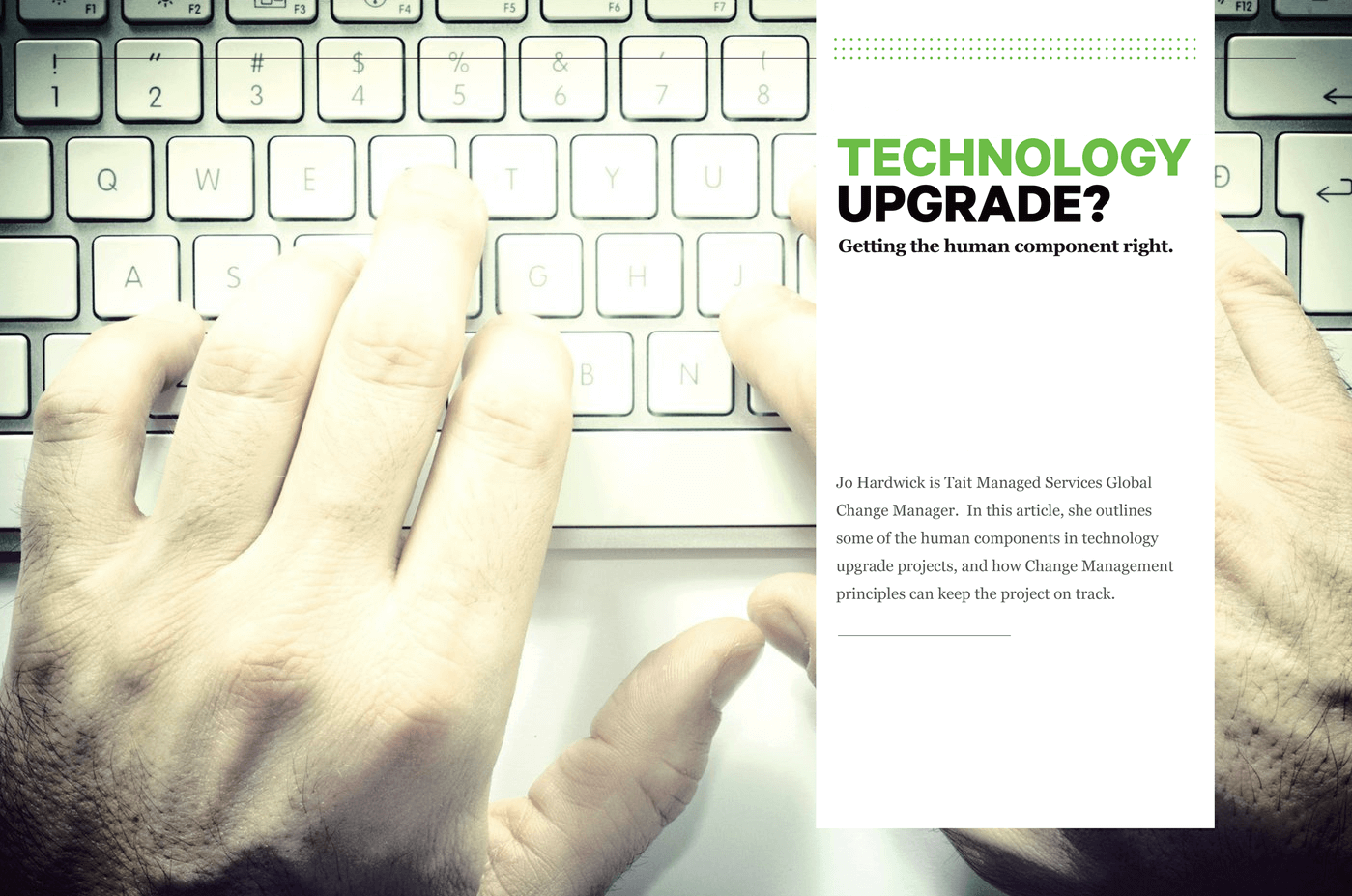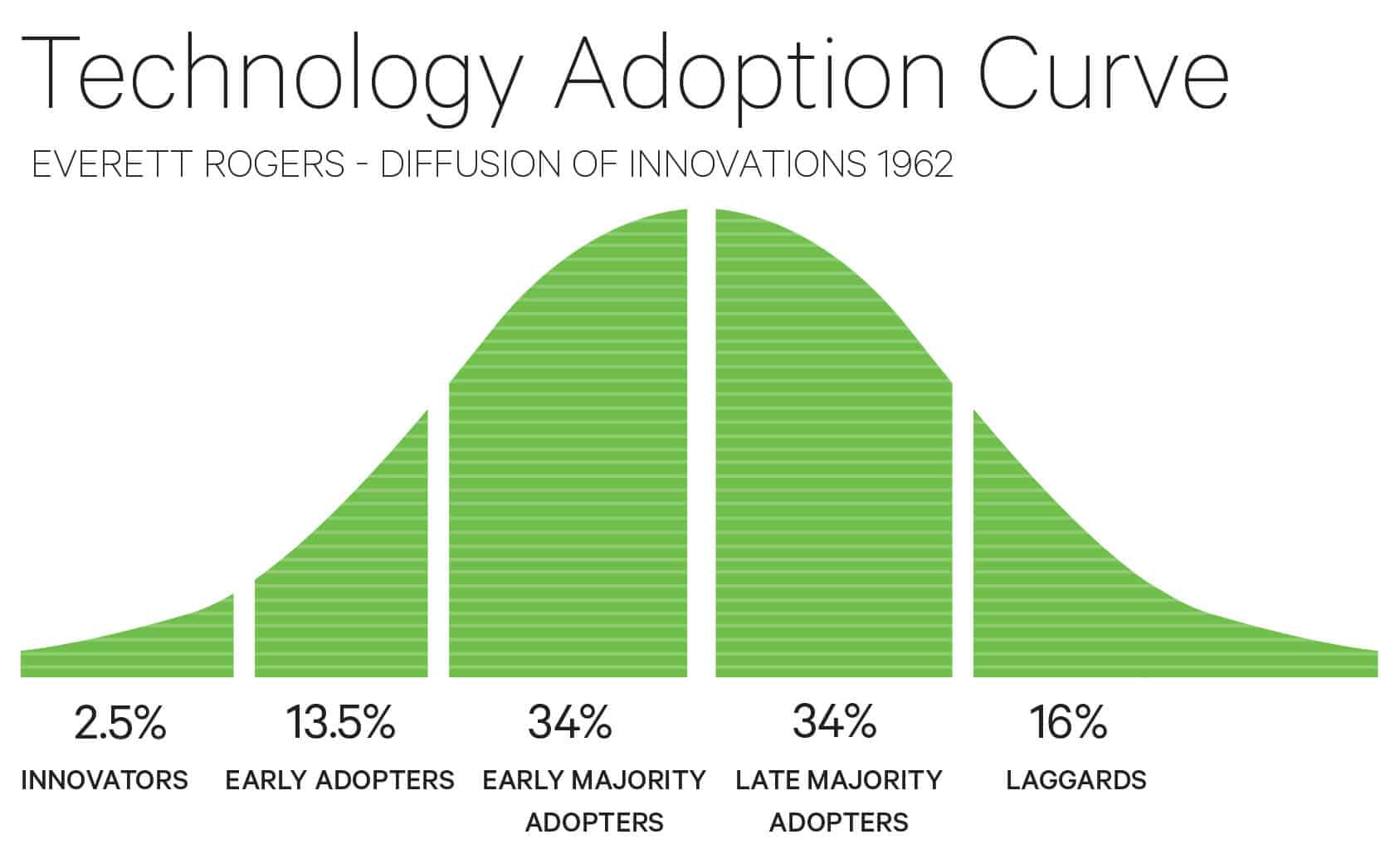 Jo Hardwick is Tait Managed Services Global Change Manager. In this article, she outlines some of the human components in technology upgrade projects, and how Change Management principles can keep the project on track.
Jo Hardwick is Tait Managed Services Global Change Manager. In this article, she outlines some of the human components in technology upgrade projects, and how Change Management principles can keep the project on track.
Whatever your organization is involved in, you know your environment is changing so fast that you must adapt to advancements, or be left behind. You face the challenge of building change resilience into your workforce to support each technology evolution.
Your new tools will only deliver value if employees use them. And new processes can only deliver value if everyone follows them. To deliver on the intended results and outcomes from any technology upgrade, many individuals – at many levels – will need to do their jobs differently.
“To improve is to change; to be perfect is to change often.” – Winston Churchill
You can ensure the success of a new communications network in this constant state of change. Change management can help you deliver on the results and outcomes you need from your project by tackling change how it really happens – one individual at a time.
 In essence, project success is a measurement of how well the change was managed. There is a very clear connection between project success (or lack of it) and failure to consider the human aspect – behavior and uptake. Individuals fall into distinct groups as far as their personal readiness to accept and adapt to change is concerned, and follow a predictable curve of commitment to change. So it is important that preparation for, and measurement of the progression through the change curve occurs early and often during a project.
In essence, project success is a measurement of how well the change was managed. There is a very clear connection between project success (or lack of it) and failure to consider the human aspect – behavior and uptake. Individuals fall into distinct groups as far as their personal readiness to accept and adapt to change is concerned, and follow a predictable curve of commitment to change. So it is important that preparation for, and measurement of the progression through the change curve occurs early and often during a project.
Two common reasons why technology upgrades fail
1) User Resistance
 Resistance to technology upgrades is most often linked to a lack of buy-in to the change; When the upgrades have been imposed without discussion, the speed of adoption is slow. Conversely, users who feel like they have contributed to the change are more likely to be promoters of the new technology across the organization, and more likely to adapt to and adopt it faster. Even when they are initially reluctant, by involving them early, they have time to accept the change well before it is implemented. Leadership has a critical role to play. Insufficient communication between managers and employees, inadequate engagement with those at the forefront, and failure to manage pockets of resistance throughout the change journey are common reasons why a technology upgrade fails to deliver the benefits it promised.
Resistance to technology upgrades is most often linked to a lack of buy-in to the change; When the upgrades have been imposed without discussion, the speed of adoption is slow. Conversely, users who feel like they have contributed to the change are more likely to be promoters of the new technology across the organization, and more likely to adapt to and adopt it faster. Even when they are initially reluctant, by involving them early, they have time to accept the change well before it is implemented. Leadership has a critical role to play. Insufficient communication between managers and employees, inadequate engagement with those at the forefront, and failure to manage pockets of resistance throughout the change journey are common reasons why a technology upgrade fails to deliver the benefits it promised.
Example:
A Public Safety organization required a new radio network and brought together representatives from all its user groups to help choose the new solution. Whenever decisions were made that would impact on particular users, those users were consulted and informed. The change to the new network was readily accepted because the users at every level knew why changes had to happen, why the particular solution was chosen, and how they would personally benefit from it.
2) Inadequate Training
Poorly-scoped technology upgrades that do not take training of new and existing technology user groups into account, can jeopardize the projected return on investment for the new technology. It is vital to carefully tailor and manage training for any technology upgrade. Training must be role-specific and relevant, focus on the changes and upgrades only, repeated frequently and account for individual learning styles, whether classroom and hands-on style.
Identifying and understanding the user requirements will indicate knowledge gaps that require further education and training. It can be challenging for decision makers to fully identify training needs, and to understand that others have not had the benefit of their immersion in the project.
Example:
An organization implementing a new radio network did not take into account high staff turnover and failed to plan for training on the new network during the roll out. As a result, a significant number of staff were unable to communicate effectively on the network, endangering their own lives and the lives of others.
Eventually, training was scheduled. Unfortunately the organization saw this as an opportunity to train all staff on all aspects of the radio network, rather than just focusing on the tasks relating to the upgrade. Users suffered information overload and a subsequent lack of confidence in their ability to adopt the change further impacted on the project success.
A poorly executed plan can have as much impact as an inadequate (or non-existent) one. Failure to plan for and execute appropriate change management can be extremely damaging to the project success and can damage the capacity and capability of the organization to meet their next change challenge.
Conversely, well-executed change management supports the growth of change resilience within your organization, ensuring everyone involved will adapt successfully to an environment of frequent change.

Six ways to ensure technology upgrade success
- Establish an Executive Sponsor roadmap
Active and visible executive sponsorship is consistently ranked as the most important contributor to change management success (Prosci benchmarking reports 1998 – 2011 cumulatively). Executives who remain active and visible throughout the project keep their workforce positively engaged throughout the change journey. - Generate a communications plan
In post-project reviews, the most common feedback is “we should have started the communications earlier” or “we needed to communicate more often”. Consider the various stakeholder groups and what messages need to be given to them and when. Projects can quickly shift off track when communications are insufficient, inappropriately timed or delivered by the wrong people. Those delivering the message – from Executives to direct line managers – must deliver it in the best way to build support. - Create a management plan for Line Managers
Employees want to hear critical information from two people: the Executive of the organization, and their direct manager. Don’t neglect training your line managers on how to successfully guide people through the technology changes. - Resistance management mapping
The technology adoption curve diagram shows that you will inevitably need to manage adoption by different personnel at different speeds. You can identify and predict potential areas of resistance and proactively plan in advance how you can resolve these behaviors. - Identify training requirements
Based on the level of change, scope the potential user requirements for training and plan what is needed by when. You will also need to identify who is responsible for that training, whether it is formal or informal, and whether you will involve trainers from outside your own organization. - Measure the progress of change
Ask yourself: “Was the change successful? Have we achieved our goals?” One way to regularly plot the progress of change is to measure against the adoption curve to indicate the adoption rate. This will indicate the areas where continued efforts are needed to ensure the on-going utilization of the new network as designed and delivering on all the benefits it promised.
We welcome your views, comments and suggestions in the Tait Connection Magazine LinkedIn group.
 This article is taken from Connection Magazine, Edition 4. Connection is a collection of educational and thought-leading articles focusing on critical communications, wireless and radio technology.
This article is taken from Connection Magazine, Edition 4. Connection is a collection of educational and thought-leading articles focusing on critical communications, wireless and radio technology.



